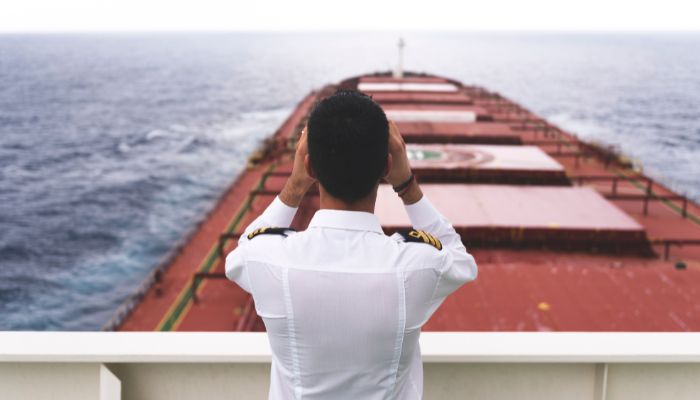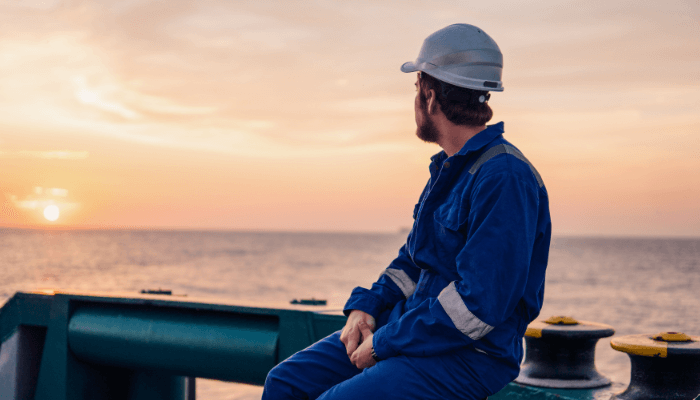PEARL HARBOR — The Pacific and Indian Oceans Shipping Working Group (PACIOSWG) conducted Exercise Bell Buoy 2022 at Pearl Harbor, June 27 to July 1. This RIMPAC is the largest deployment of NCAGs personnel from multiple partner nations.
U.S. 3rd Fleet and the U.S. Fleet Forces Naval Cooperation and Guidance for Shipping (NCAGS) team hosted 11 member nations and more than 44 participants.
The command and control of the multi-national Shipping Coordination Center in Hawaii, and multi-location shipping control teams, spanned the globe with participants from Australia, Brazil, Canada, Ecuador, France, Republic of Korea, New Zealand, Singapore, United Kingdom, U.S., and the non-nation participant, NATO Shipping Center.
“We are extremely pleased with the Bell Buoy 2022 outcomes, especially the global integration and synchronization of maritime operations over 17 time zones– leveraging the talents, experience and collective capabilities of this multinational team for the benefit and protection of shipping,” said U.S. Navy Vice Adm. Michael E. Boyle, commander of the RIMPAC 2022 Combined Task Force and commander of U.S. 3rd Fleet.
The aim of Bell Buoy is to develop respective NCAGS and maritime trade operations (MTO) capabilities and foster interoperability of PACIOSWG member nations in the protection of seaborne trade. Using established doctrine and published procedures, the exercise refreshed the practice for maritime trade protection.
“The Bell Buoy exercise series anchors member nations and allies in the practice of NCAGS, to unlock maritime trade operations training opportunities and realize greater interoperability through partnership and collaboration,” said Boyle.
The major themes for training involved harassment of shipping issues and piracy, and a vessel visit and briefing on NCAGS at Honolulu Harbor.
“Bell Buoy offers participants the ability to apply tactical, operational and strategic level advice on civil shipping and maritime trade protection matters while acquiring knowledge of the maritime environment, to include patterns of life and engagement with maritime industry at various levels,” said U.S. Navy Capt. John Bellissimo, the Bell Buoy exercise director.
For the first time at RIMPAC, an NCAGS Symposium was held July 1 at Joint Base Pearl Harbor-Hawaii’s Ford Island. The event include NCAGS and MTO thought leaders from the France, the United Kingdom, and the U.S. Navy and Coast Guard. Designed to collaborate, develop and share readiness best practices for maritime domain awareness and information sharing, the event also included NCAGS focus area presentations and a panel discussion with NCAGS and maritime industry experts, covering a broad range of current maritime industry security issues and trends.
“The globally integrated NCAGS and MTO practices confront multi-national maritime problems with multi-national maritime solutions,” said Capt. Alex Soukhanov, a U.S. Navy Strategic Sealift Officer and active U.S. Coast Guard licensed master mariner and harbor pilot.
“Successful naval operations require cooperation and communication with the concerned regional commercial maritime stakeholders” said Royal Navy Lt. Cmdr. Rob Drake.
French Navy Cmdr. Eric Jaslin presented on the Maritime Information Coalition Awareness Center (MICA) and its worldwide network of information centers.
While an expert on MTS Security and Cyber with U.S. Coast Guard discussed the 2020 U.S. National Maritime Cyber Strategy for building cyber-resilience across the Maritime Transportation System.
“Global health, safety, and well-being are inextricably linked to the maritime enabled flow of goods and services” said Leigh Cotterell on the U.S. Coast Guard.
Over 60 personnel from 14 different partner and ally navies participated at the inaugural NCAGS Symposium, in an effort to further build capable and adaptive partners.
The German Navy deployed four NCAGS officers to support RIMPAC 2022. The afloat elements actively engage the bridge watch teams and other crew to provide information on NCAGS procedures, which help prepare mariners for operating in contested maritime environments or other shipping risk areas.
Twenty-six nations, 38 ships, four submarines, more than 170 aircraft and 25,000 personnel participated in RIMPAC from June 29 to Aug. 4 in and around the Hawaiian Islands and Southern California. The world’s largest international maritime exercise, RIMPAC provides a unique training opportunity while fostering and sustaining cooperative relationships among participants critical to ensuring the safety of sea lanes and security on the world’s oceans. RIMPAC 2022 is the 28th exercise in the series that began in 1971.
Source: https://www.dvidshub.net/news/426518/bell-buoy-brings-11-partner-nations-together-rimpac-2022











